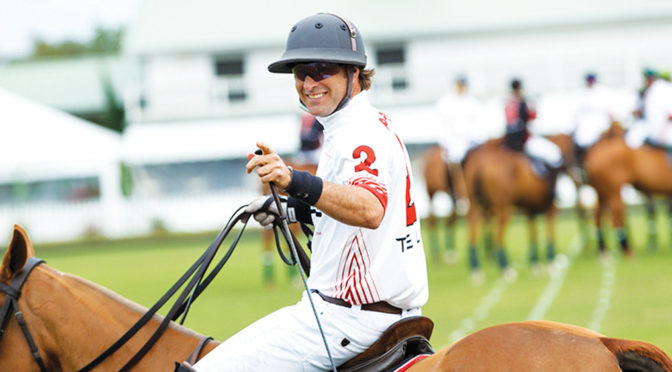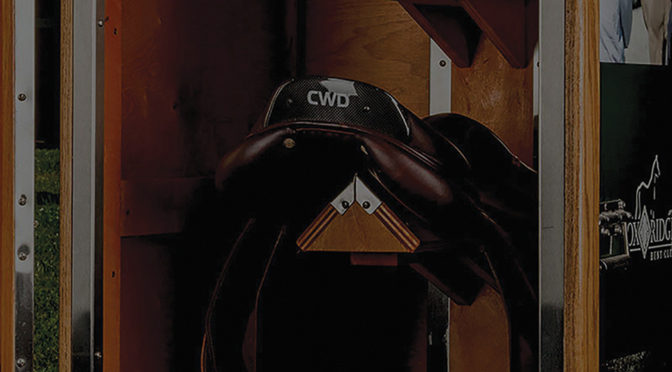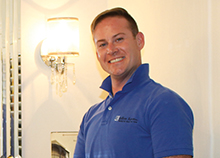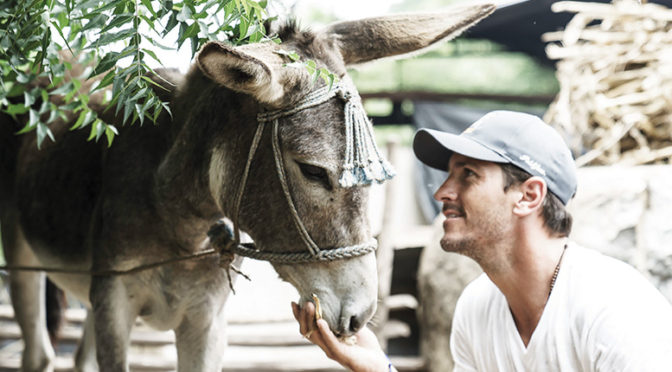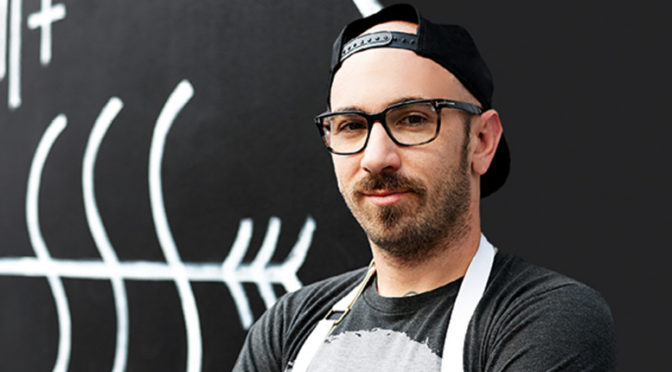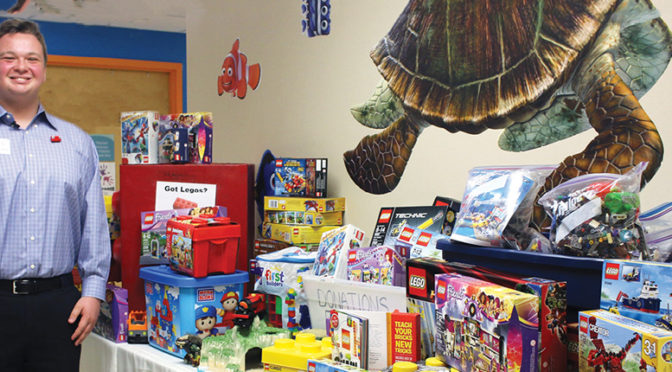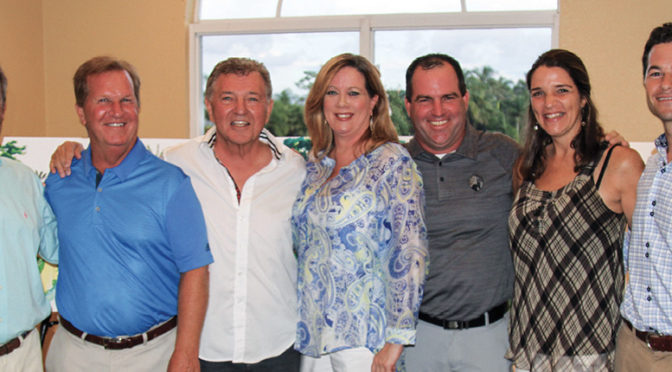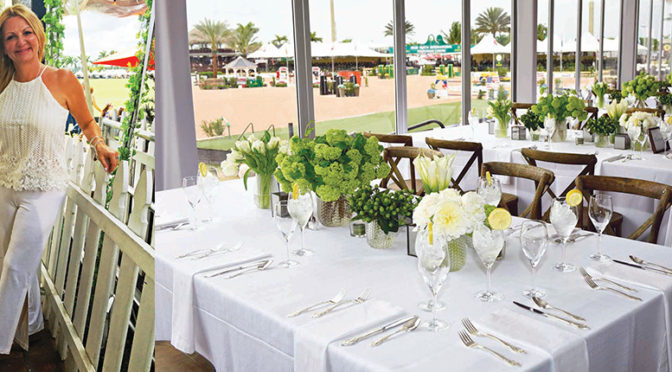Brandon Phillips Brings Lessons From The Polo Field To Philanthropy
STORY BY MELANIE OTERO • PHOTOGRAPHY BY LILA PHOTO
Brandon Phillips approaches philanthropy the same way he does the polo field: Surround yourself with a great team, make it fun and bring your competitive spirit.
It’s a philosophy that the Wellington resident and world-renowned polo professional has followed for the past four years as the founder and honorary chair of the Leukemia & Lymphoma Society’s Polo for a Purpose event. Always believing he can do more, Phillips has helped grow the event from a luncheon that raised $60,000 in 2013 to a full day of events that raised six times that amount — $360,000 — in 2016.
He is determined that this year’s Jan. 16 event at the International Polo Club Palm Beach will best a half-million dollars and attract an even greater number of guests.
The program begins at noon with a luncheon, silent and live auctions and a cocktail reception. At 3 p.m., the grounds of the venue will open for scheduled family-friendly activities, and at 4 p.m., there will be a concert by Gipsy Sound Revolution.
One of Phillips’ first experiences that drew him to the Leukemia & Lymphoma Society was personal. As a survivor of stage 4 non-Hodgkin’s lymphoma that struck at age 14, Phillips was asked by LLS to talk to a Boca Raton boy named Bruce Steinberg who was going through recovery. Steinberg wanted to meet a professional athlete. What he found in Phillips was a lifelong friend.
The two first met at Phillips’ stable in Wellington. As Steinberg admired the horses, the survivors discovered they were like-minded in how they fought their cancer battles.
“I see so much of myself in Bruce when I was his age,” Phillips said. “We both have very positive attitudes and know that this disease is a hurdle we just need to jump. Our outlook during treatment was more about how it interfered with our sports and the good time we were having as teenagers. We never thought about dying.”
Although Phillips travels extensively as a polo professional, he always makes time for Steinberg when he’s home for the winter in Wellington. In between, the two stay connected through texts and social media.
Philips also makes sure that Steinberg is always involved in Polo for a Purpose. “We’ve made Bruce an honorary member of our team,” Phillips said. “He’s our fifth player.”
Phillips’ relationship with Steinberg and his first Polo for a Purpose event were what made him break his silence about his childhood cancer.
“It took me a while to accept this role,” he said. “After I was sick, I didn’t want to speak to anyone. When I turned 30, I decided to see what I could do to help.”
He has kept his word. In just four years, Phillips has created a wildly successful and popular charitable event in a county that is home to countless fundraisers. He is very aware that the event must be different, fun and more exciting every year to keep attendance and support growing.
“It’s no different from competitive polo,” Phillips noted. “We have to top ourselves every year.”
Phillips is quick to credit the team around him — co-chairs P.J. Rizvi, Visse Wedell and Penny Bradley, and LLS Executive Director Pam Payne — who challenge each other to make the event a memorable experience for people of any age or income bracket.
Rizvi used her connections to take the event to the next level this year by inviting Gipsy Sound Revolution — a reincarnation of the Gipsy Kings with several of the original band members — to perform after the match. And throughout the day, the co-chairs have arranged for the grounds to be filled with activities for families. A kids’ zone, ice cream trucks and face painting are just some of the activities planned.
“We really want people to enjoy themselves,” Phillips said, adding that for $40, guests can spend the day at the polo club, watch an exciting match and stay for an amazing concert.
For those wishing to make a larger contribution, there will be a gourmet luncheon with silent and live auctions before the four-on-four high-goal polo match.
Seating for the luncheon is limited and nearly sold out. The cost for the polo match and concert is $40 per person, and tailgate tents holding up to 10 people with admission to the concert cost $400.
Polo for a Purpose is just as fun for Phillips as he hopes it is for attendees. It’s a homecoming of sorts for him, and a way to give back the community that embraced him.
He started his professional polo career in Wellington at 17, and his teammates are top players who trained together in their late teens.
“We lived together, fought with each other and worked our way up from the bottom together as we were becoming professionals,” Phillips said.
Phillips sees another type of camaraderie in the stands as his team plays. The entire six-row front section of the stadium is given to children fighting cancer and their families. “To just be a kid, have fun and experience something new and exciting like polo means everything to these children,” Phillips said.
If he had his wish, cancer never would ail another child. He’s proud that the money raised from the event will go toward research for blood cancer cures and patient support in Palm Beach County.
“An important part of our funding goes toward families who have a child with cancer and can’t afford the travel and other expenses they incur as they’re going across the state or the country trying to save their son’s or daughter’s life,” Phillips said.
Saving lives through research is why LLS exists, said Payne, executive director of the Palm Beach area chapter.
“Forty percent of the drugs in the FDA pipeline approval are for blood cancers to help keep people alive, thrive and have a life like Brandon’s,” she said. “Children who have cancer look at Brandon and see an amazing athlete who was once where they are now. It’s hard to find enough words to express how grateful we are to him for his work toward a world without blood cancer.”
Phillips’ competitive spirit comes through when he reflects on his work for LLS.
“I always want to do better,” he said. “That’s the attitude I try to pass along to kids — winning is everything, it’s the only thing, especially when the game is your life. You have to think of the future and do what you have to do. It’s a test from God. You have to pass. You have to win.”
If you ask any of the kids rooting for Phillips, they’ll tell you he already has.
To learn more about the Leukemia & Lymphoma Society’s Polo for a Purpose event, call (561) 616-8682, e-mail events@poloforapurpose.org or visit www.poloforapurpose.org.
